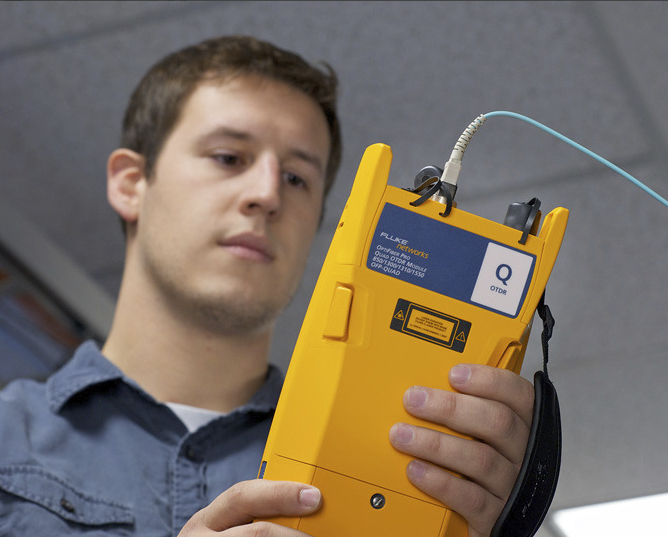케이블링 산업 현황
Advantage of Automated Fiber Inspection over Manual
Over the past decade, the amount of fiber in the data center has increased significantly due to the need for higher bandwidth between switches and the ever increasing amount of equipment requiring fiber uplinks to storage area networks (SANs), not to mention the demand for maximum availability that calls for redundant primary and secondary fiber network connections to every piece of equipment.
2016년 9월 28일
Deploy and Test Shielded Cable with Category 8
TIA TR 42.7 TP케이블 배선 소위원회는 최근 카테고리 8 배선(TIA 568 C.2-1), 현재 개발 중인 미래의 IEEE 25GBASE T 및 40GBASE T 어플리케이션을 지원 하도록 설계된 최신 트위스트 페어 TP케이블 시스템에 대한 사양을 승인했습니다.
With all the buzz surrounding Category 8, you and your customers might be wondering how exactly it will impact the deployment and testing of cabling infrastructures.
Let's take a closer look at where it will be deployed and some of the key characteristics that impact installation and testing.
2016년 9월 22일
Upgrading Your Fiber Plant to 40 and 100 Gigabit Speeds
Just Now Upgrading to 10 Gig? We Didn't Forget About You
While upgrading backbone cable plants in the LAN to support 10 Gig has been going on for several years since the release of the 10GBASE-SR standard for fiber, many enterprise businesses did not previously require these types of speeds, until now.
2016년 9월 8일
How to Set Up DSX-5000 for New Installation?
Getting the right setup to ensure the best test results with your DSX-5000
If you turn up to a new installation with your new DSX-5000 then it might be up to you to ensure the DSX-5000 is set up correctly. So what do you have to do?
Well, if it’s brand new out of the box, then you need to do a basic set up. But, with every new project there may need to be changes if you make installations tests in other countries or time zones with different requirements for date or time differences, or different formats for them or numbers.
2016년 8월 25일
케이블 테스트 101: There's No Gain with "Gainers"

In a recent Cable Testing 101 series blog on mixing multimode fiber types, we covered the considerations surrounding mixing legacy 62.5 micron (µm) OM1 fiber with today's laser optimized 50µm OM3 and OM4 fiber and highlighted the "gainers" that can happen when transmitting from a smaller 50µm fiber core to a larger 62.5µm fiber core.
2016년 8월 19일
APC 커넥터의 손실 측정 방법
This question often gets asked in my classes at the same time as when talking about launch methods using launch and tail fibers. So let’s talk about launch fiber compensation.
2016년 8월 11일
Understanding POH: The Power Behind HDBaseT Technology
Last month we posted a blog about HDBaseT that explained the application and how testing isn't really any different since standards-based Category 5e, 5 or 6A will support it. But maybe you've also heard about power over HDBaseT, or POH, and you're wondering how that differs from power over Ethernet (PoE).
A Little Bit More
2016년 8월 4일
All About Alien Crosstalk Measurement
Alien crosstalk is a relatively new measurement that’s widely misunderstood. I’m often asked why it’s an important measurement and if it’s required to be measured by the standards. Also misunderstood is the sampling criteria for alien crosstalk measurements, which are applied so that not all links have to be tested?
2016년 7월 21일
케이블 테스트 101: What is the Difference Between OM3 and OM4?
![]() OM3 and OM4 multimode fiber are two common types of fiber used in local area networks--typically in backbone cabling between telecommunications rooms and in the data center between main networking and storage area network (SAN) switches.
OM3 and OM4 multimode fiber are two common types of fiber used in local area networks--typically in backbone cabling between telecommunications rooms and in the data center between main networking and storage area network (SAN) switches.
2016년 7월 14일




